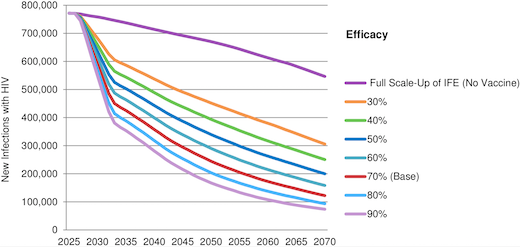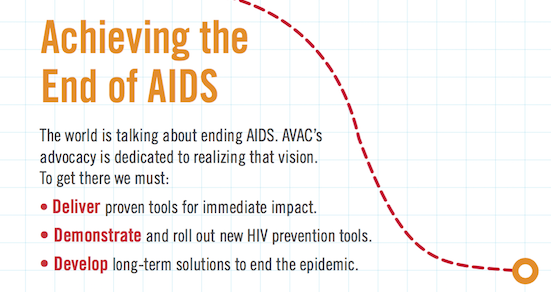Today, the US National Institutes of Health (NIH) announced that it will fund a large-scale efficacy trial in South Africa to test the prime-boost vaccine regimen that is a modified version of the RV144 vaccine that showed modest efficacy in 2009. This will be the first large-scale HIV vaccine trial to take place in South Africa in almost a decade, and an exciting development for the country and the field. In addition to the announcement, NIH also posted questions and answers about the new study.
Still have questions or want to hear more about what this all means? Then join us on Tuesday, May 31, at 10am US Eastern/4pm South Africa time (see www.timeanddate.com for the time in your area), for a webinar with Linda-Gail Bekker from the Desmond Tutu HIV Foundation and the lead investigator on the current HVTN 100 vaccine trial.
Register for the webinar here.
The announcement of the trial, known as HVTN 702, comes on HIV Vaccine Awareness Day, the annual event that allows us all to recommit ourselves to accelerate the search for an HIV vaccine. As we wrote on Monday, today and every day, we should all say, “I’m committed to ending the AIDS epidemic, and that means finding an HIV vaccine.”
The announcement that HVTN 702 will take place comes nearly seven years after the announcement of efficacy data from RV144. In the intervening years, global scientific collaborations have probed the responses from RV144 and developed plans, in combination with industry, to optimize the regimen so that it might work better, provide more durable protection and is tailored for the HIV subtype C that is most common in Southern Africa.
Today’s decision is based on an interim analysis of HVTN 100, a current trial in South Africa led by the NIH-funded HIV Vaccine Trials Network (HVTN) that is looking for immune responses and safety in South African volunteers of the modified vaccine combination. HVTN 702 will start later this year and will measure safety and efficacy in 5,400 participants.
Under the current plan, it will be at least four years before there are data from HVTN 702. Check out our new AIDS Vaccine Research Overview that shows the HVTN 100/702 trials in context of the larger field. Other HVAD materials are here. In addition, check out some of these new HVAD articles that just came out:
- Members of Vaccine Advocacy Resource Group published HIV Vaccine – Closer than ever in the South African Mail & Guardian’s Bhekisisa Centre for Health Journalism.
- Recent AVAC Fellow Anna Miti in Zimbabwe published a new blog entitled Wanted-AIDS Vaccine.
- Kate MacQueen of FHI 360 and Mitchell Warren of AVAC published a Viewpoint – HIV Vaccine Awareness Day: Sustaining the momentum – in the Journal of the International AIDS Society.
As is so often and so rightly said in this field: much accomplished; much to do!
















